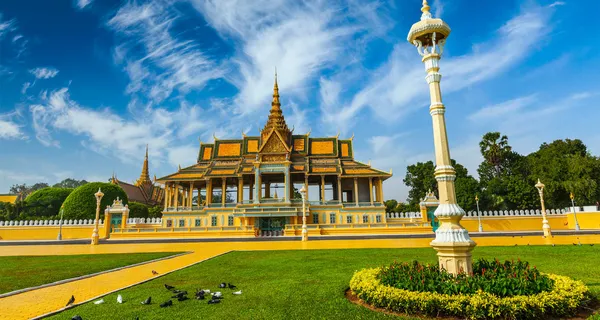On this page
Phnom Penh is the capital city of Cambodia, a Southeast Asian country with a population of 15 million. Founded in 1434, Phnom Penh sits on the banks of the Tonlé Sap and Mekong Rivers. The city is rich in culture, tradition and history. Phnom Penh is a developing city at the center of a developing nation and is thus a very challenging environment for wheelchair users.
My 2016 trip to Cambodia was made possible with the development of the innovative, wheelchair accessible Mobilituk. I also accepted an invitation to give a talk about accessible tourism to disability advocates and travel professionals in Phnom Penh. It didn’t take long for me to fall in love with the city and its people.
On this page, I’ll share what I learned about wheelchair accessibility in Cambodia’s capital city. A trip to Phnom Penh is not for the faint of heart. You’ll still have a great time if you arrive with the appropriate expectations and open yourself to the local culture.
Accessible Hotels & Accommodations
When I am deciding on an accessibility rating score for this particular element, I consider the types of accessible accommodations offered across multiple price points. As of this time, I know of only two wheelchair accessible Phnom Penh hotels that offer rooms with a roll-in shower.
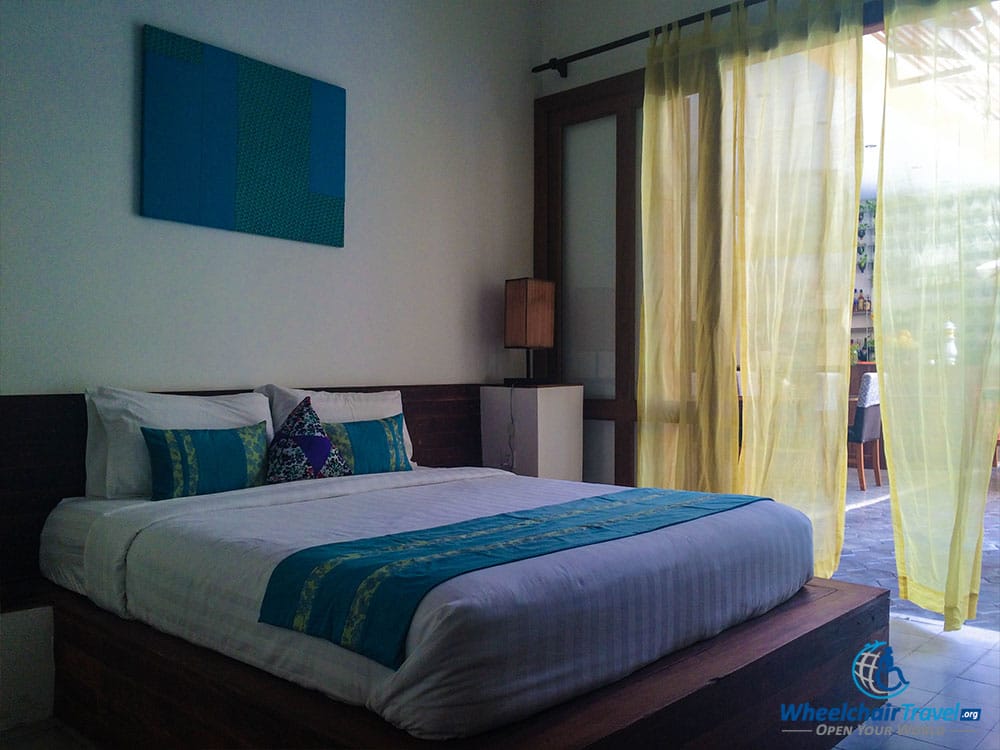
The first is the House Boutique Eco Hotel, which I have stayed at and reviewed in detail on the blog. That’s a fairly accessible locally-owned property on the budget end of the spectrum, with highly rates of around $50 USD. I had an extremely enjoyable and memorable stay and hope you’ll consider supporting their work.
The second is the Sofitel Phnom Penh Phokeethra, with nightly room rates starting at $189 per night. It’s a luxury accommodation and one of the most expensive in the city. You’ll have to decide which of the two is better for you, both in accessibility and cost.
It is my hope that the number of hotels offering accessible accommodation in Phnom Penh will increase as the accessible tourism market grows. If you learn about any other accessible hotels, please share in the comments below.
Attractions & Sights – Things to Do
Truth be told, I was disappointed in the limited number of accessible activities in Phnom Penh. That said, I still had a great time. I made the best of the situation, and spent more time out in the community.An evening roll through the street market by my hotel was actually a lot of fun. I’ll share what I learned about the city’s attractions during my short trip to Phnom Penh.
S-21 Tuol Sleng Genocide Museum
The troubling history of the Khmer Rouge is memorialized at the Tuol Sleng Genocide Museum. The museum takes the place of a former Khmer Rouge camp (S-21), where thousands were interrogated, tortured and killed. During the period 1975-1979, approximately 20,000 people came through the camp. Only 7 survived.
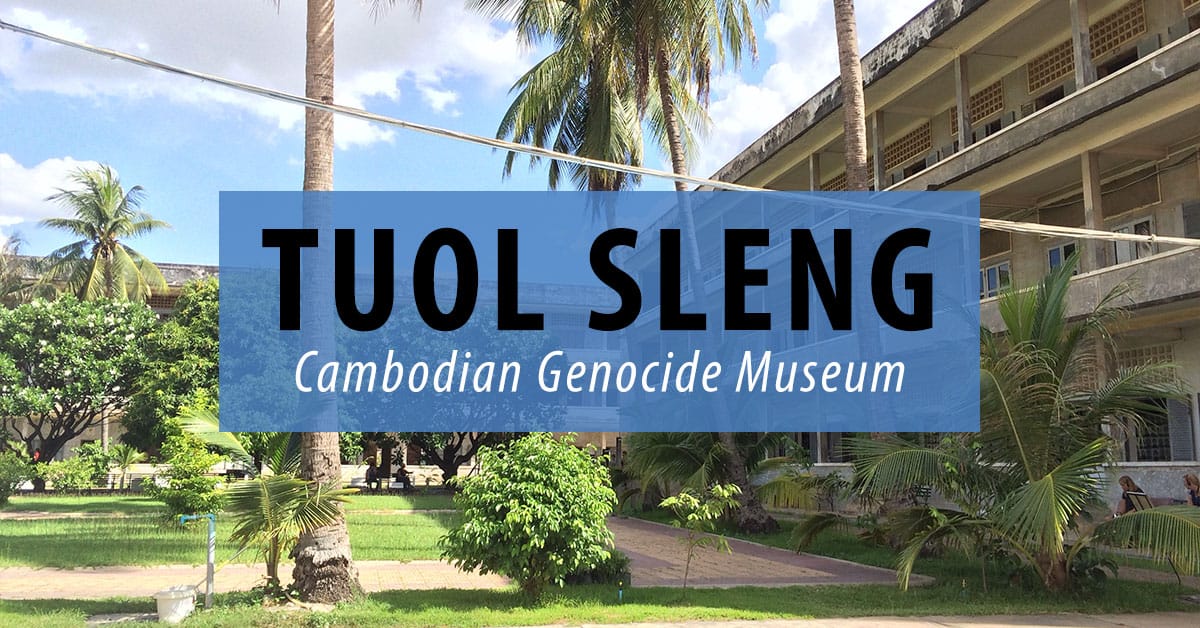
Only parts of the museum are wheelchair accessible. Entry is free for people with disabilities, and I had a very powerful visit to the camp. While more of the museum should be made accessible (it just needs a few ramps), you’ll not regret visiting S-21 as is. You can read a full review of my tour and detailed notes on accessibility in this blog post – Facing History at S-21: Cambodian Genocide Museum.
National Museum of Cambodia
I was really surprised when I arrived at Cambodia’s National Museum and found it to be inaccessible. Although the staff and volunteers there were willing to lift me up the stairs at the entrance, it wouldn’t have been possible in my heavy power wheelchair. If you don’t mind being lifted up a staircase or two, visit the museum in a manual wheelchair.
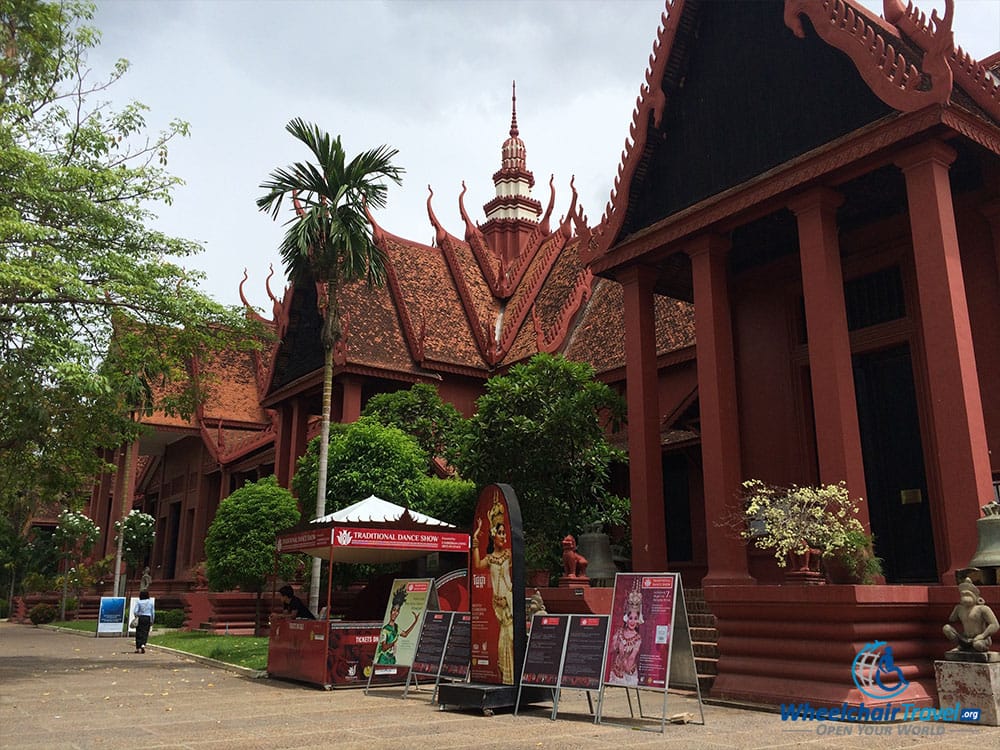
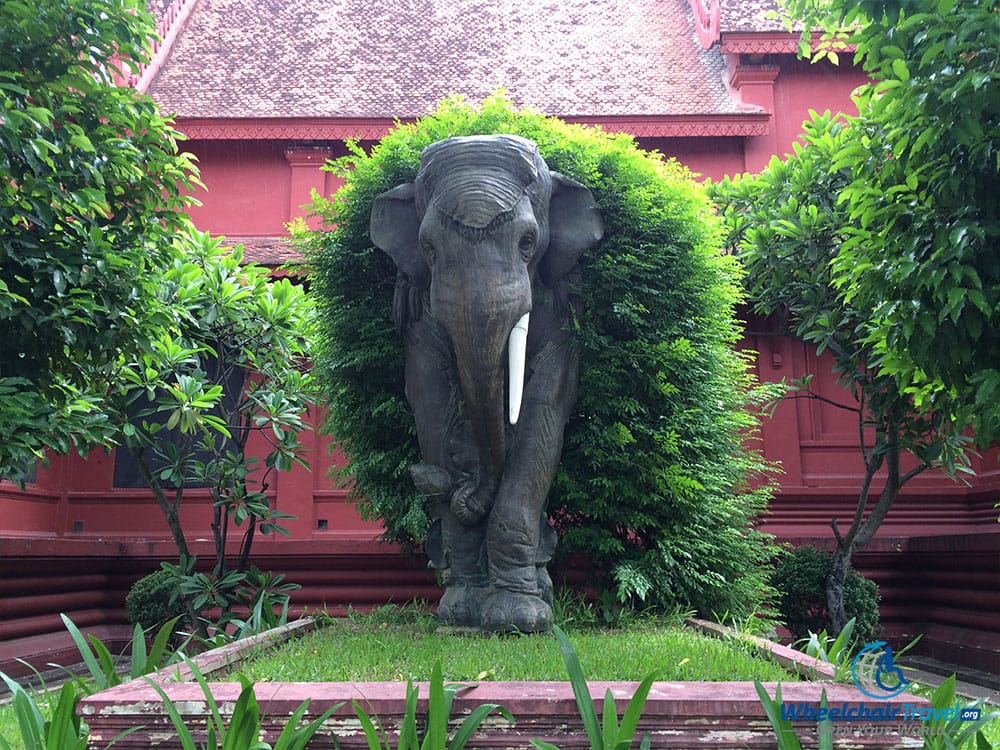
The ramps that would be required here would be much more costly than those needed at S-21, and I can’t really expect the government to make such an investment. I was able to snap a really cool picture of the elephant statue which guards the museum building, though.
If you are a manual wheelchair user and can make it inside, whether on your own or with the help of others, learn more at www.cambodiamuseum.info. Admission is $5 USD – there is no discount offered to people with disabilities.
National Olympic Stadium
The Olympic Stadium, opened in 1964, has of course never been a venue for the Olympic Games. In fact, very early in its existence, it was used as a site of mass murder by the Khmer Rouge. But those times are long gone, and a 2000 redevelopment has brought new life to the National Stadium.
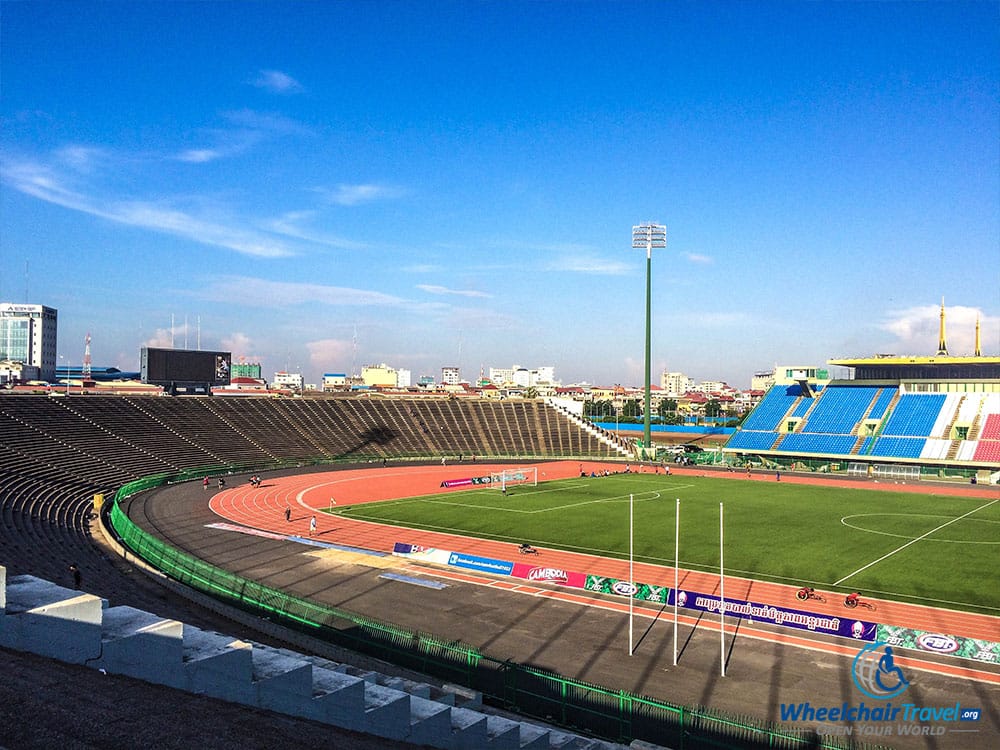
On the morning I visited, I saw several people training on their hand bikes. Were they future paralympians? I hope so – Paralympic participation would be a great thing for the disability rights movements in Cambodia.
On another note, Cambodia will be hosting the Southeast Asian Games in 2023, but they’re building a new stadium for that. Locals hope the Olympic Stadium will be maintained, as many athletic groups and individuals use it. It’s also at a beautiful spot in the city, and still looks great.
Street Art
One of my favorite favorite things to do when visiting a new city is to scope out the street art. Every city has it and the graffiti in Phnom Penh did not disappoint:
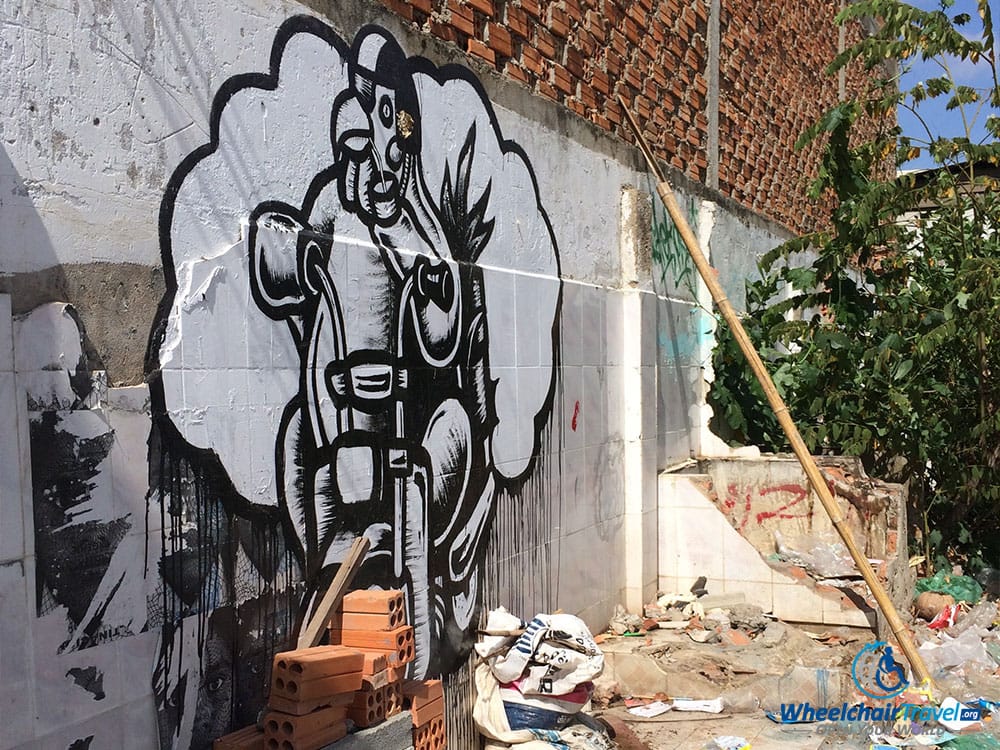
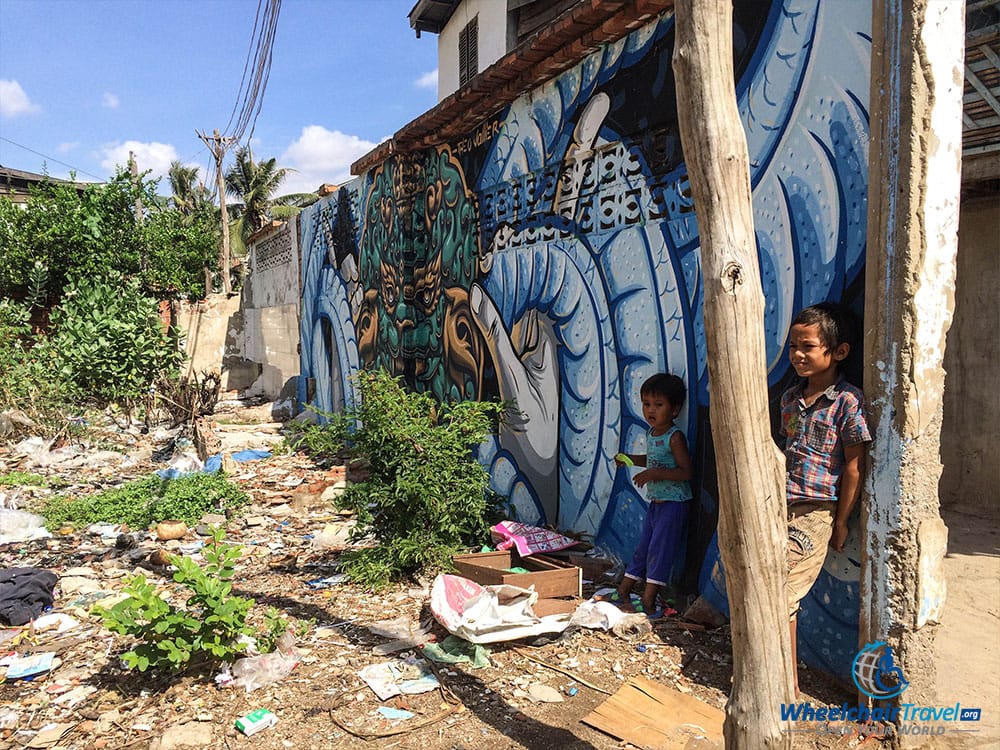
I snapped the pictures above near the intersection of streets 80 and 86. The best street art in Phnom Penh is in the residential areas. You’ll have a great opportunity to see how the local people are living and the types of communities they have built. The art isn’t bad either!
Phnom Tamao Wildlife Rescue Center
One of the coolest things I was able to do in Cambodia was about 90 minutes outside of Phnom Penh. I loaded-up in the Mobilituk (more about that later) and rode towards a wildlife rescue center that was recently featured on the TV show Survivor.
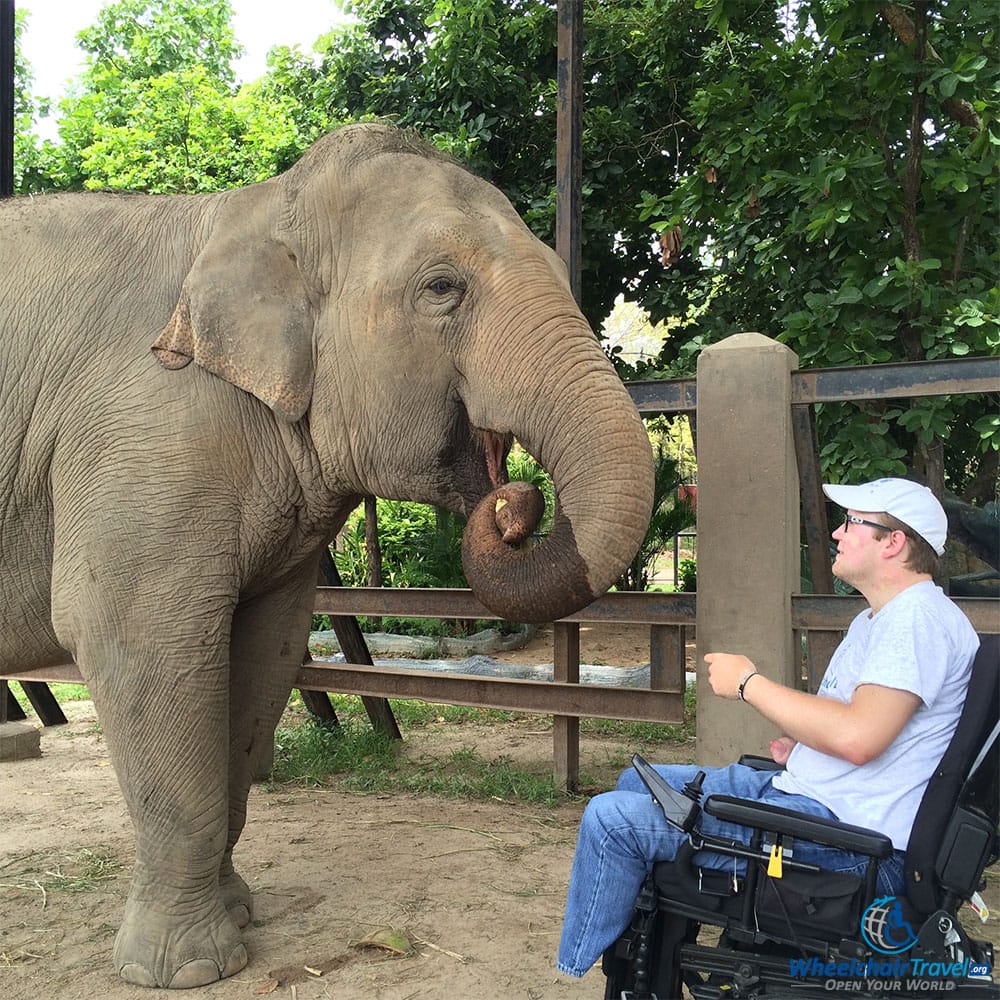
In Southeast Asia, there are a lot of businesses which allow people to ride on the backs of enslaved animals. Phnom Tamao is a non-profit rescue center, and it keeps only those animals that couldn’t survive outside in the wild. There also isn’t any riding of elephants, but you can feed and interact with them!
The real reason I wanted to visit Phnom Tamao, though, was to meet Chhouk. He is Cambodia’s only elephant using a prosthetic device (a foot), and it was incredible to watch this amputee elephant have his prosthetic changed.
If you’d like to read more about my time at Phnom Tamao and watch a video I captured of the prosthesis being changed, click here. I also share some information about what to expect when visiting the rescue center as a wheelchair user.
Food & Dining
I’ve been to cities where the dining scene was lackluster. Phnom Penh is NOT one of those cities. There is a bit of everything, including some… delicacies you’d never imagine eating. Beef topped with ants, anyone? Yeah, I ate that – and it wasn’t bad at all. Here are a few things I ate while in Phnom Penh:
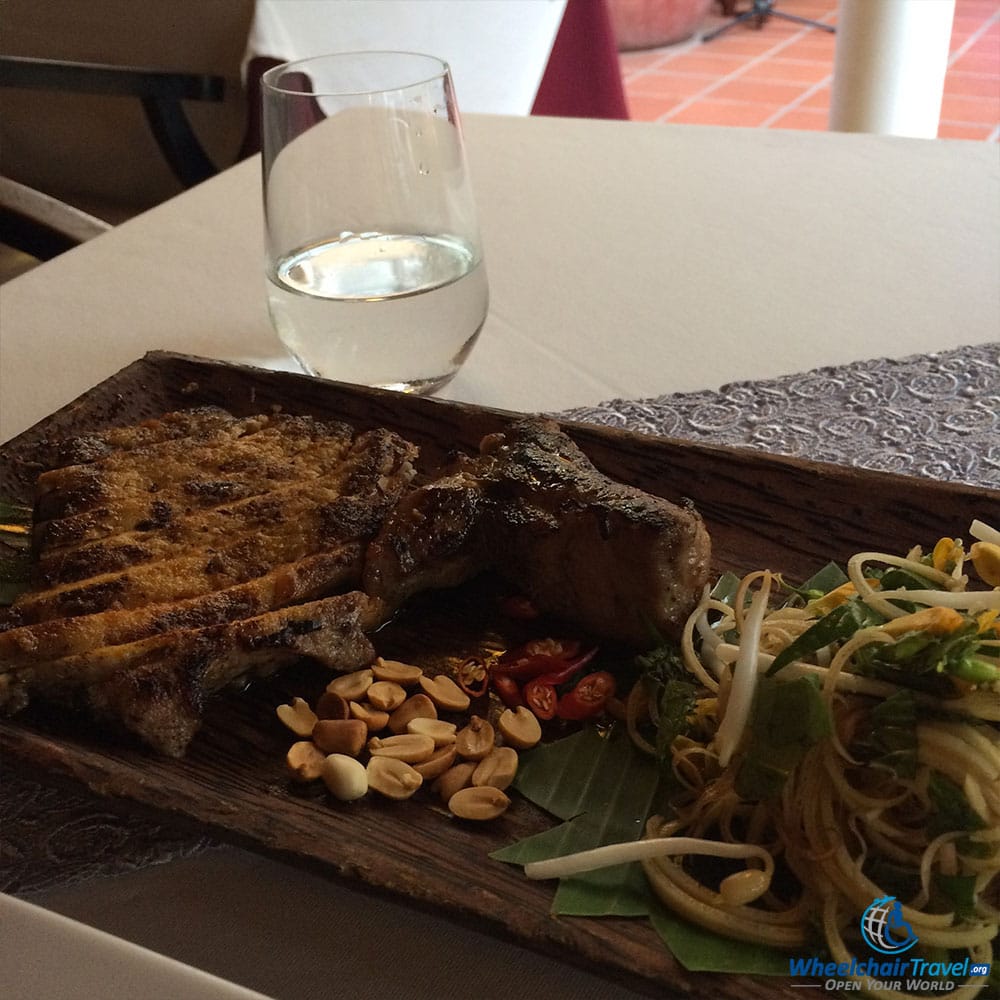
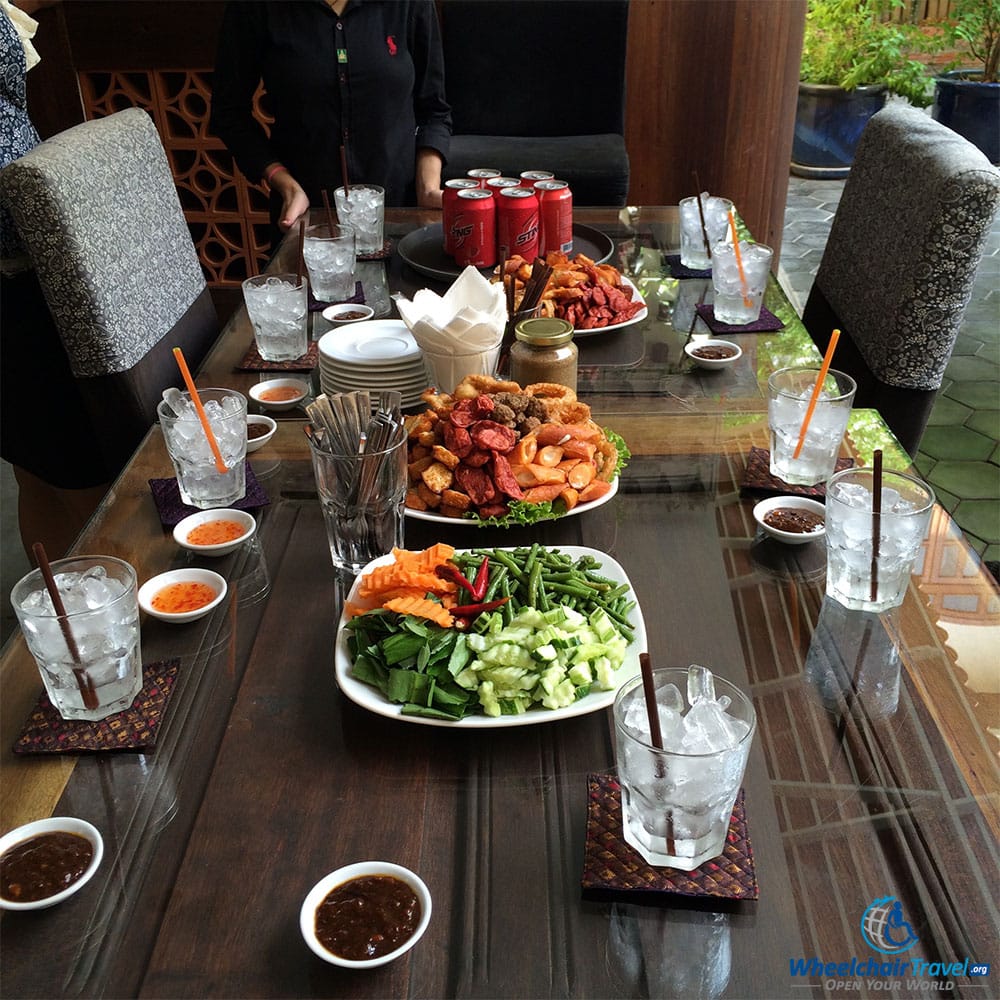

The first photo is of my dinner entree at Malis Restaurant, one of the nicest dining establishments in Phnom Penh. I had an entree, dessert, wine and sparkling water for around $50 – definitely expensive, but I wanted to try it.
Photo #2 is a spread that was laid out during a staff birthday party at the House Boutique Hotel. I was invited to join the festivities, and all of the food was delicious. If you do stay at that hotel, I won’t judge you for dining in – it really is great food, and wildly affordable!
KFC has a strong presence in Asia, and Phnom Penh is no exception. If you’ve not tried KFC while in Asia, you should – it is much tastier than you’ll find in the USA. I can’t explain it, but the recipe has to be different – even among countries in Southeast Asia. Fried chicken and a Pepsi, what more could you ask for?
Sidewalks & “Roll-ability”
Sidewalks! Where? Well, there are a few, but most of the city doesn’t have footpaths. Everyone walks on the side of the street, which is safe – in most places.
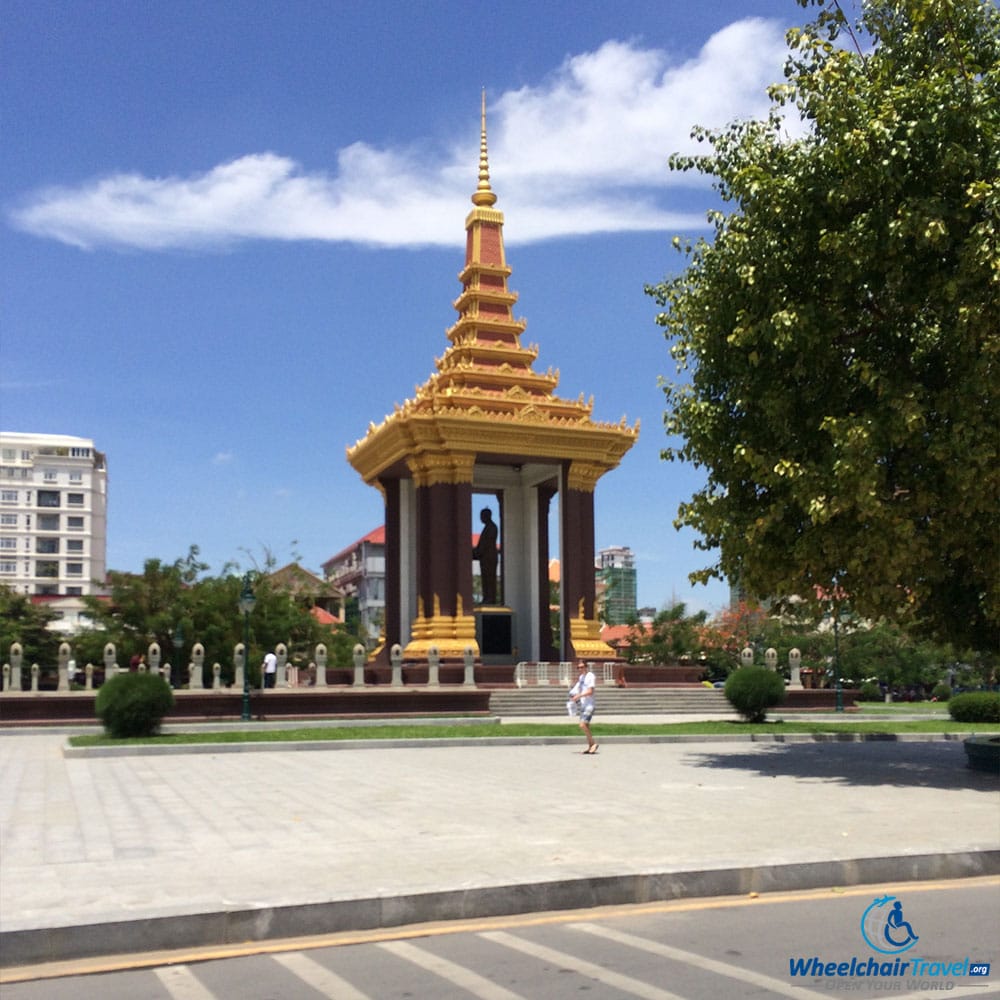
Where there are sidewalks, wheelchair users should not expect to find a curb cut or ramp. I wasn’t able to find any myself. On my next trip to Phnom Penh, I’ll definitely bring a portable ramp of my own. That will allow access to areas like the Royal Palace and the beautiful walkway down Preah Sihanouk Boulevard, which contains sights like the Independence Monument and the pagoda covering a statue of King Father Norodom Sihanouk (pictured above).
Phnom Penh Airport
Phnom Penh has a very nice, modern airport that makes traveling with a wheelchair easy. I flew in and out of PNH on Malaysia Airlines. On arrival, my gate-checked wheelchair was returned at baggage claim, which meant I had to be pushed from the airplane and through passport control by an airport assistant. He was friendly.
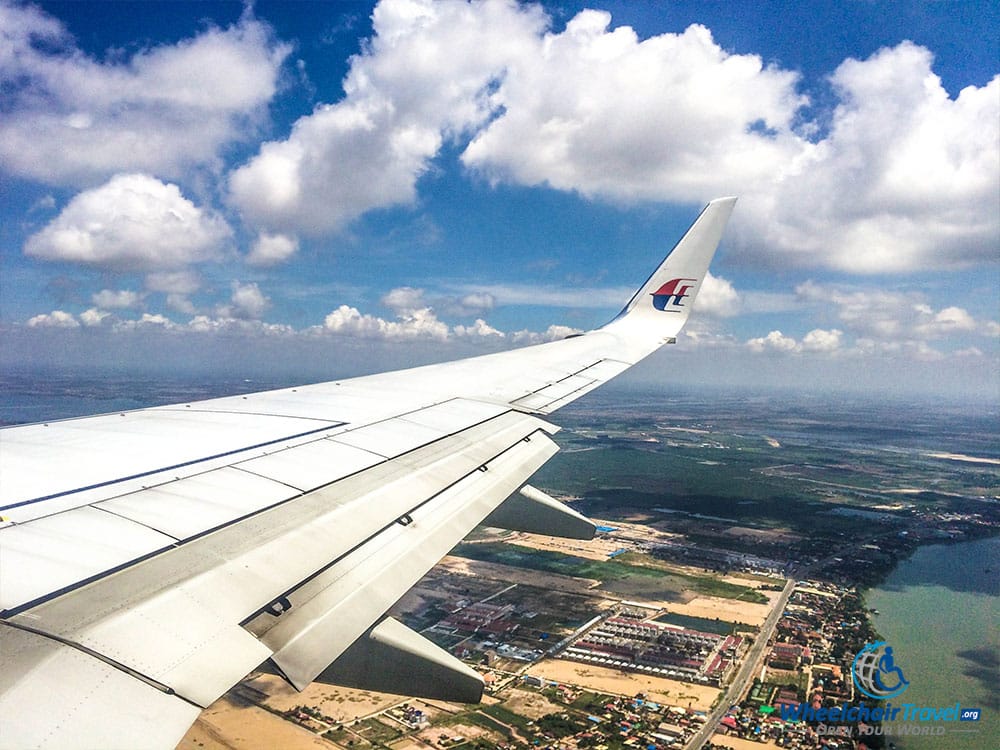
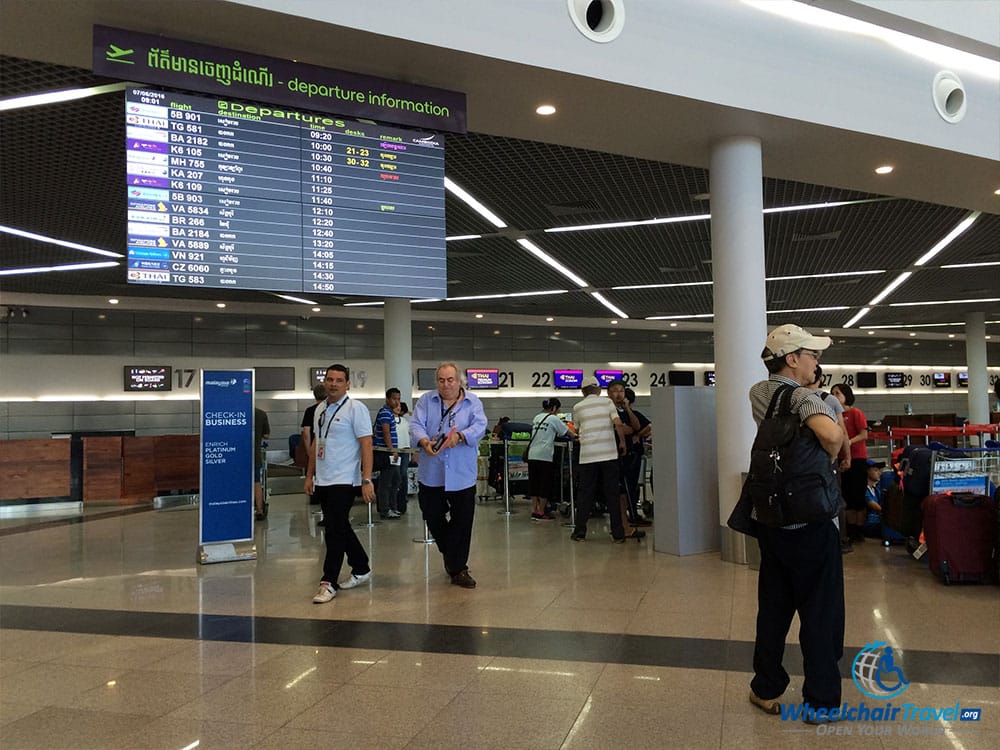
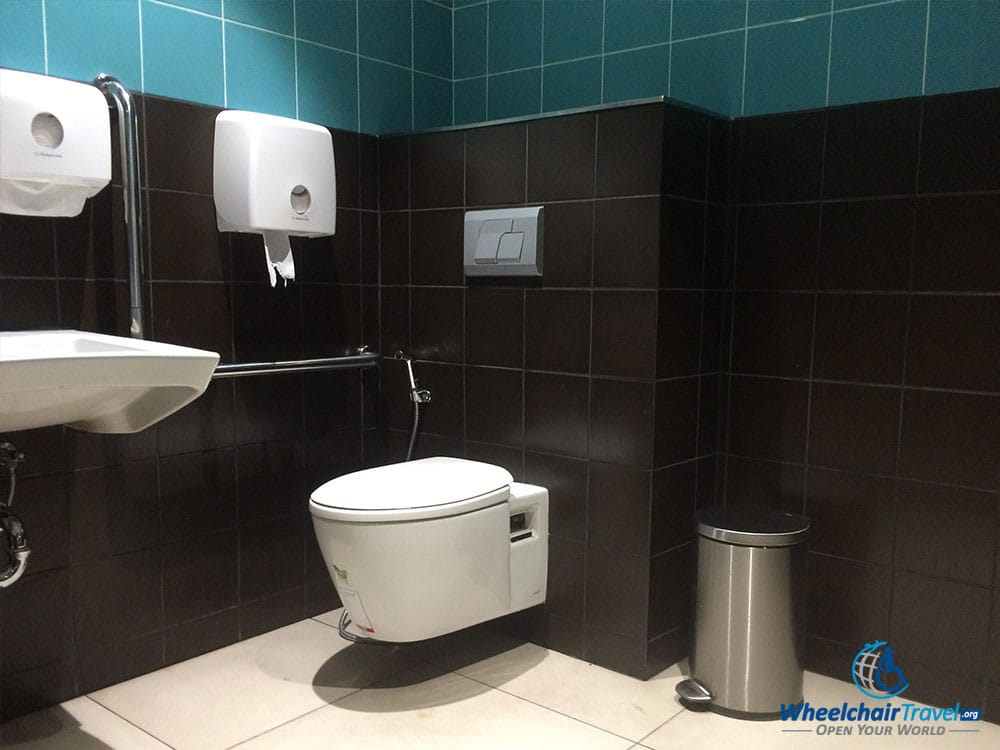
On departure, I insisted on taking my power wheelchair to the gate. This request was granted and my plane left on-time.
The terminal was accessible, with elevators, wide hallways and a wheelchair accessible bathroom (pictured above). For more information about the Phnom Penh Airport, visit www.cambodia-airports.aero.
Public Transportation
A city bus service consisting of three lines/routes has existed in Phnom Penh since 2014. Unfortunately, the buses are not wheelchair accessible and you must climb several stairs to board.
Fares are cheap – about $0.37 USD for a ride. If you’d like to learn more, check out the Wikipedia article – there is currently no official website for the service.
Wheelchair Taxis
Prior to the development of the wheelchair accessible tuk-tuk (Mobilituk), there was no barrier-free transportation option for wheelchair users in Cambodia. I have been really excited about this project, because it is responsible for my being able to visit Phnom Penh.
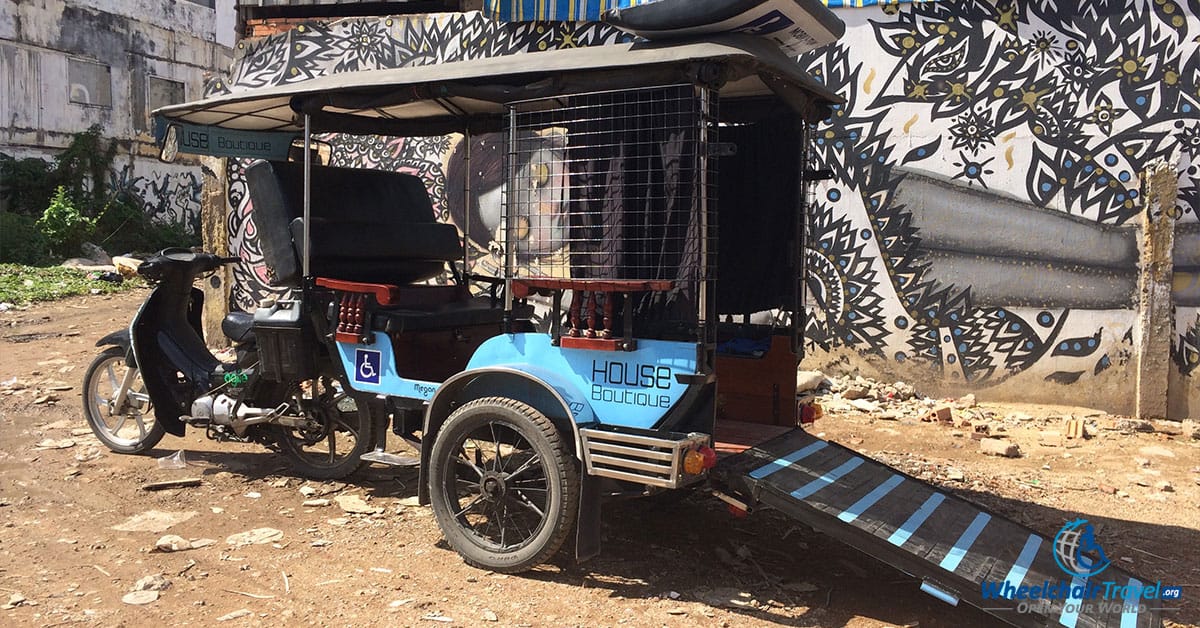
Currently, there is only one Mobilituk, but the group responsible for its construction is looking to build more. It is my hope that the Mobilituk will spread across Cambodia and other regions needing a barrier-free transportation solution.
The cost of a ride is negotiated with the driver, but the 30-45 minute ride from the airport to my hotel was $10. I also reserved the tuk for full days (8 hours) for $30 USD. I think it’s a great deal.
You can reserve the Mobilituk by calling the House Boutique Hotel at +855 (0) 23 220 884. You don’t have to be a guest of the hotel to use the tuk. To read my complete blog post about using the Mobilituk (with video), click here.

